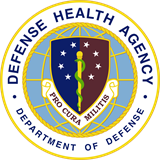|
 |
Defense Health Agency (DHA), Vision Center of Excellence (VCE) Program Management Support Services |
4S supports the VCE Technology Directorate’s Program Management Office (PMO) and provides program management for all VCE projects and research initiatives, including leading data standards and architecture, requirements and configuration management, risk management, system administration, information assurance, and quality assurance.
VCE Master Data Management Strategy and Charter – As required by VCE initiatives, 4S developed domain ontologies leveraging existing available vocabularies to establish a baseline standard for Electronic Medical Health Records. Utilizing ontologies provides an efficient mechanism to construct many-to-many abstract, concrete, and reasoned dependencies across many data sources to promulgate transparency and quality throughout the data value chain.
Our Holistic Approach yields results – 4S efforts create data interoperability for ingesting and aggregating medical record data from Theater Medical Data Store (TMDS), Military Health System (MHS) Data Repository (MDR), Joint Theater Trauma Registry (JTTR), Transportation Command Regulating Command Arid Control Evacuation System (TRAC2ES), and Veterans Health Information Systems and Technology Architecture (VISTA). Our architects utilize National Institutes of Health’s Unified Medical Language System (UMLS) ontologies and vocabularies to ensure data standardization, for example RxNorm links patient medicine prescriptions to a unique RxNorm identifier disambiguating drugs and enabling semantic concept linking useful for finding all patients with similar drugs or allergies. A comprehensive Visual Acuity Data Model providing standardized LogMAR acuity across data sources. 4S implemented an HL7 canonical model to facilitate integration of disparate source systems.
VCE Requirements Analysis and Management (RA&M) process – 4S is responsible for all aspects of management and administration in support of VCE system and Information Technology (IT) operations. Using a four-step process and program-specific governance mapped to a Requirements Definition and Analysis (RDA) processes 4S performed Requirements Analysis. The four-step process includes: Requirements Elicitation, Requirements Analysis, Requirements Validation, and Requirements Management. We follow several guiding frameworks, such as: American National Standards Institute (ANSI)/International Organization for Standardization (ISO), Capability Maturity Model Integration (CMMI), and Information Technology Infrastructure Library (ITIL), and the Program Management Institute (PMI). 4S enforces consistent program management artifacts throughout each project’s lifecycle.
Ongoing Monitoring of Performance Metrics – 4S works to develop and monitor performance metrics for programs supported and/or overseen by the VCE for over 20 projects and initiatives. These inputs include operational availability, risk management strategies, incident, event, and problem reports, and plans to address operational deficiencies. Working to develop Government approved systems/components the team also researches, identifies, and provides cost estimates for industry standard technology hardware and software solutions.
|